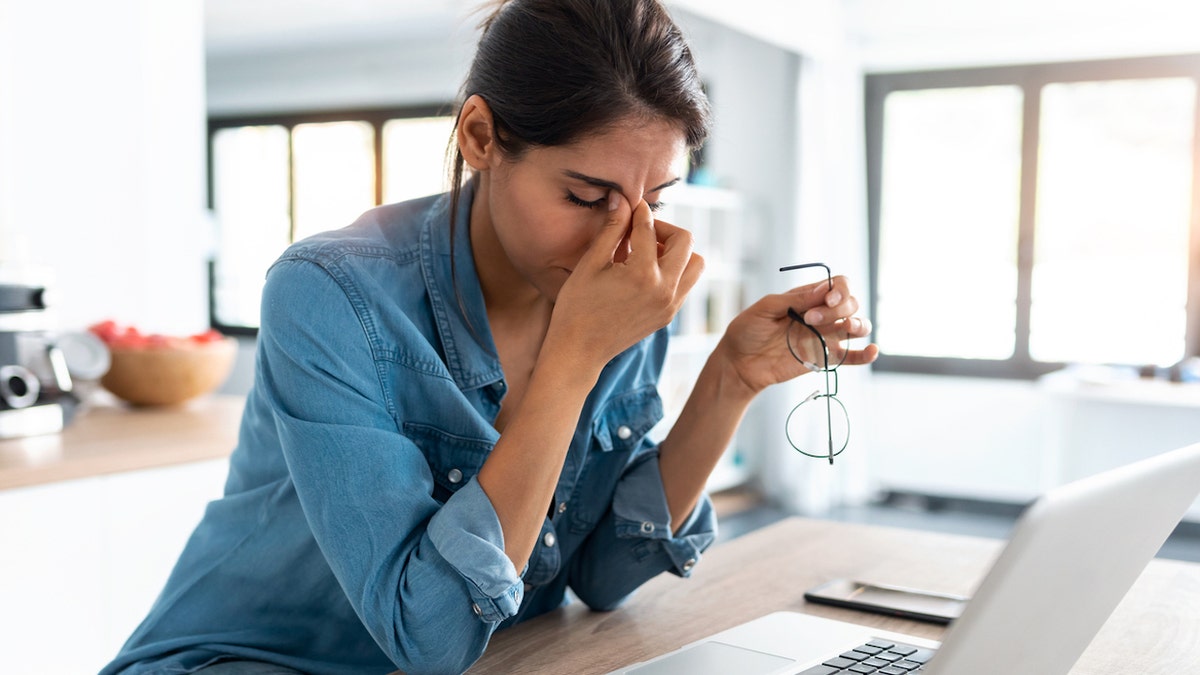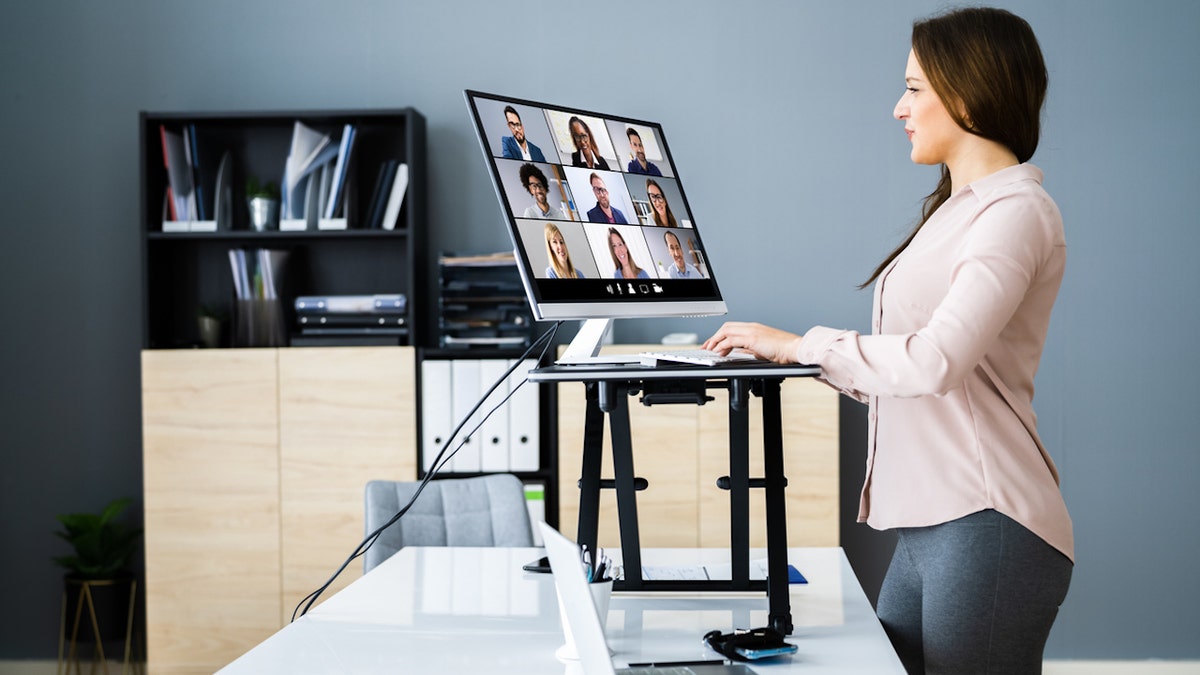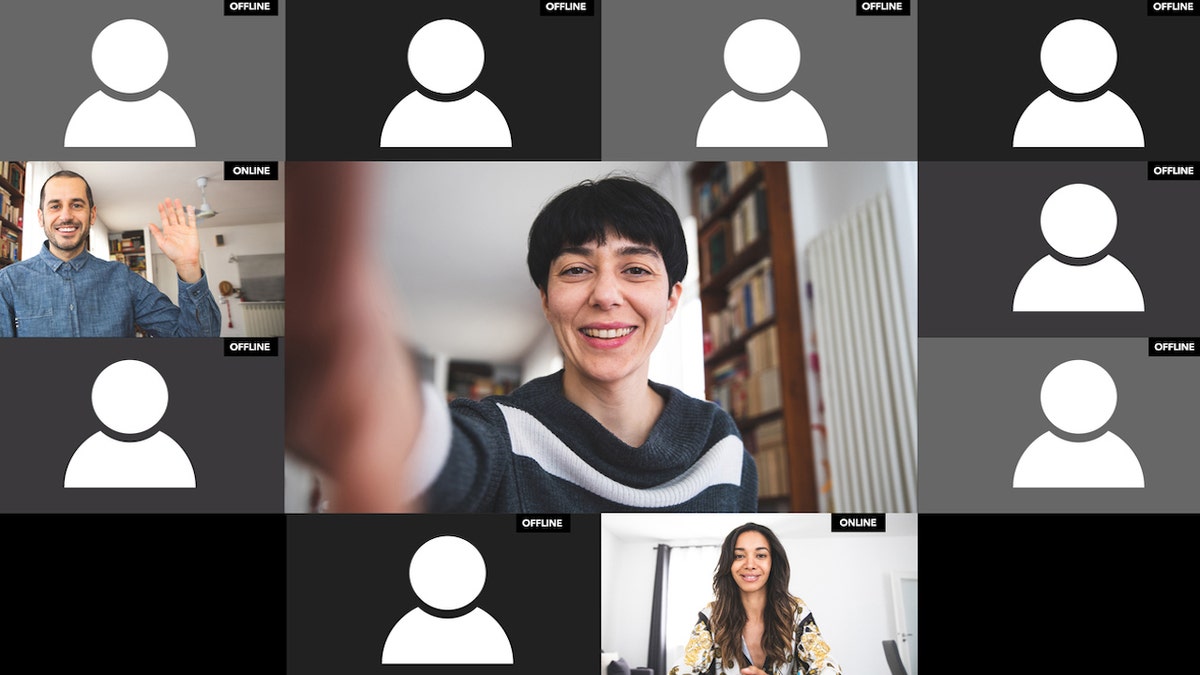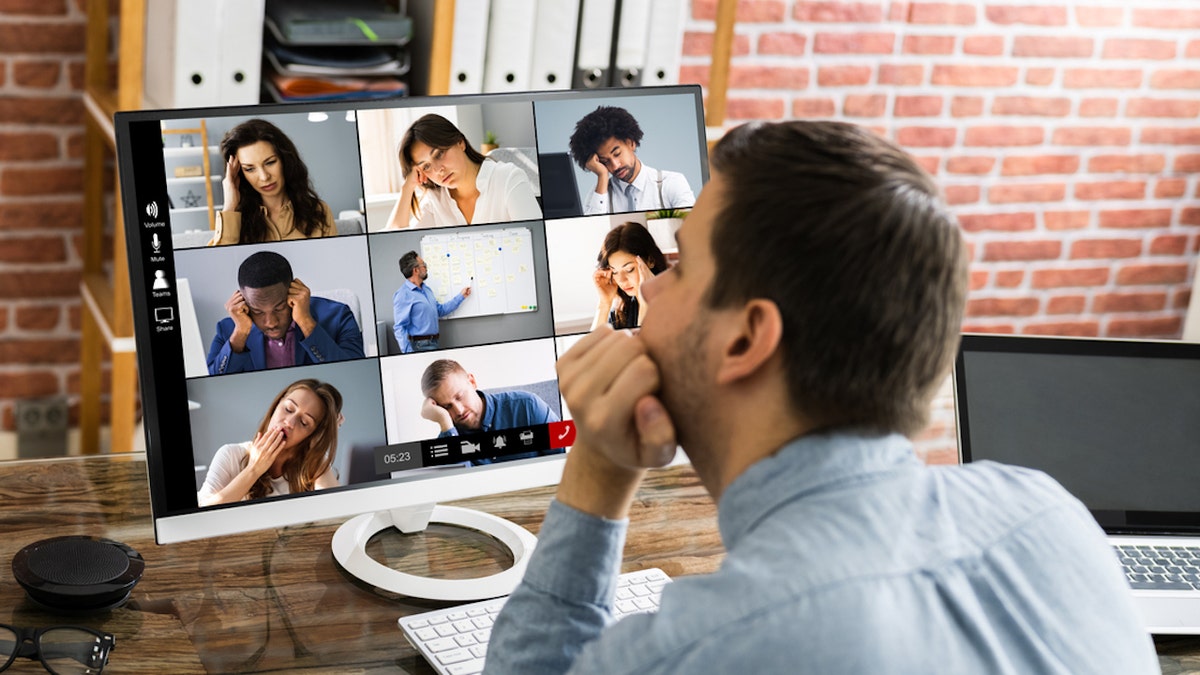Attending meetings in pajama bottoms might seem like a job perk, but some remote workers have found that videoconferencing for work isn’t all it’s cracked up to be.
In the years since the COVID pandemic triggered a spike in telecommuting, many have complained of so-called “Zoom fatigue.”
Thought to be coined by Stanford University professor Jeremy Bailenson, the term refers to a level of exhaustion that comes with interacting with others on camera all throughout the day.
REMOTE WORKERS RESIST MONDAY OFFICE HOURS, BUT BUILDING ‘ORGANIZATIONAL CULTURE’ IS KEY, SAYS EXECUTIVE
Dr. Kyle Elliott, a tech career coach in San Francisco, defines Zoom fatigue as “incessant tiredness or lack of energy as a result of spending a large quantity of time on Zoom.”
Additional symptoms can include physical tension (including headaches, eye strain and stiffness), moodiness, a sense of disengagement or difficulty concentrating, according to Dr. Julia Corcoran, a licensed clinical psychologist and board-certified coach, who is currently serving as the director of clinical strategy and experience at Modern Health in San Francisco.
The challenge isn’t exclusive to Zoom; other videoconferencing platforms can have the same effect.
The pandemic’s effect
With the COVID-19 pandemic, Zoom and other videoconferencing platforms “exploded in popularity,” said Dr. Carl Nassar, PhD, a professional counselor based in Denver, Colorado.
“We all found ourselves at home looking at the people we worked with, the people we went out for drinks with and the people in our extended family on a computer screen,” he told Fox News Digital.
WORKERS FIRED ON ZOOM: HERE’S HOW TO NAVIGATE A ‘DEVASTATING’ EXPERIENCE AND COME OUT ON THE OTHER SIDE
“Our work went virtual, our social life went virtual, our doctors’ appointments went virtual, and even our intimate relationships sometimes went virtual,” he said. “And this meant a lot of time looking at each other on-screen instead of in person.”
Long after the pandemic, many of these habits have persisted.

“This video-ing of each other, it turns out, is far more tiring to humans than actually being together,” said Nassar.
“One reason is that our brains are wired for actual in-person interactions, not wired for interactions on the screen.”
Impacts of Zoom fatigue
While video calls can be convenient, Elliott warned that staring at a computer or phone screen for extended periods of time can result in negative mental health consequences.
“Zoom fatigue can aggravate stress, anxiety and burnout among workers,” he told Fox News Digital.
“Our brains are wired for actual in-person interactions, not wired for interactions on the screen.”
“Some people share that spending so much time interacting on screens makes it difficult to interact in real life.”
CAN YOU AVOID END-OF-THE-YEAR CAREER BURNOUT? JOB EXPERTS REVEAL SECRETS
Corcoran agreed, noting that many report feeling livelier, happier and more active during in-person meetings.
“Because video platforms artificially limit our perspective, we miss the cues we’re used to from live, in-person interactions,” she told Fox News Digital.

“As social beings, we’re highly attuned to these cues, and it takes more work for us to look for and process them in the virtual environment, leading to the fatigue we experience.”
Even beyond the workplace, Elliott noted that people are using video in more personal contexts than ever before, such as sharing reels on social media and calling loved ones on FaceTime.
“Because video platforms artificially limit our perspective, we miss the cues we’re used to from live, in-person interactions.”
“This can further exacerbate the problem if you’re already spending a significant portion of your day on Zoom,” he said.
“All these video-based calls can quickly lead to video fatigue if you’re not mindful and take care to protect your mental health and well-being.”
Strategies that can help
Just because a meeting is scheduled on Zoom or a similar video conferencing platform doesn’t mean you need to be on video for the call, Elliott pointed out.
“When it makes sense, particularly if it’s a large meeting where your input will be less frequent or nonexistent, you might opt to turn your video off from time to reduce Zoom fatigue,” he advised.

The expert also recommended taking adequate breaks away from the computer, even if it’s for just a few minutes, throughout the day.
“It can be tempting, but try to avoid looking at another screen, such as your phone, during this break, since you want to avoid swapping one digital toxin for another,” Elliott said.
For those leading a video meeting, Corcoran suggested starting with a quick off-camera stretch break or mindfulness exercise to increase attention and focus.
CLICK HERE TO SIGN UP FOR OUR HEALTH NEWSLETTER
“Whenever you’re able, suggest audio-only meetings that don’t require screens so people can do things they would naturally do in an in-person setting, like move around or look out a window,” she advised.
“Walking away from our screens can reduce the urge to multitask, reduce eye fatigue and increase our capacity to move around.”

Turning off the self-view option can also be helpful, Corcoran said — “it can be particularly distracting and draining because we’re not used to seeing our own images so much.”
As the use of video platforms is still relatively new for many professionals, Corcoran noted that the long-term effects aren’t yet known.
“That being said, we know that constant feelings of fatigue, exhaustion and physical strain or tension do correlate with negative mental health outcomes,” she said.
“It’s important to take steps to reduce Zoom fatigue before it leads to things like chronic stress or burnout.”
For more Health articles, visit www.foxnews.com/health.
Read the full article here